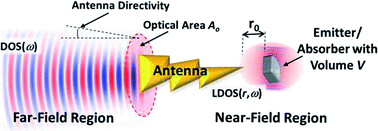Impact of optical antennas on active optoelectronic devices
Abstract
Remarkable progress has been made in the fabrication and characterization of optical antennas that are integrated with optoelectronic devices. Herein, we describe the fundamental reasons for and experimental evidence of the dramatic improvements that can be achieved by enhancing the light-matter interaction via an optical antenna in both photon-emitting and -detecting devices. In addition, integration of optical antennas with optoelectronic devices can lead to the realization of highly compact multifunctional platforms for future integrated photonics, such as low-cost lab-on-chip systems. In this review paper, we further focus on the effect of optical antennas on the detectivity of infrared photodetectors. One particular finding is that the antenna can have a dual effect on the specific detectivity, while it can elevate light absorption efficiency of sub-wavelength detectors, it can potentially increase the noise of the detectors due to the enhanced spontaneous emission rate. In particular, we predict that the detectivity of interband photon detectors can be negatively affected by the presence of optical antennas across a wide wavelength region covering visible to long wavelength infrared bands. In contrast, the detectivity of intersubband detectors could be generally improved with a properly designed optical antenna.


 Please wait while we load your content...
Please wait while we load your content...